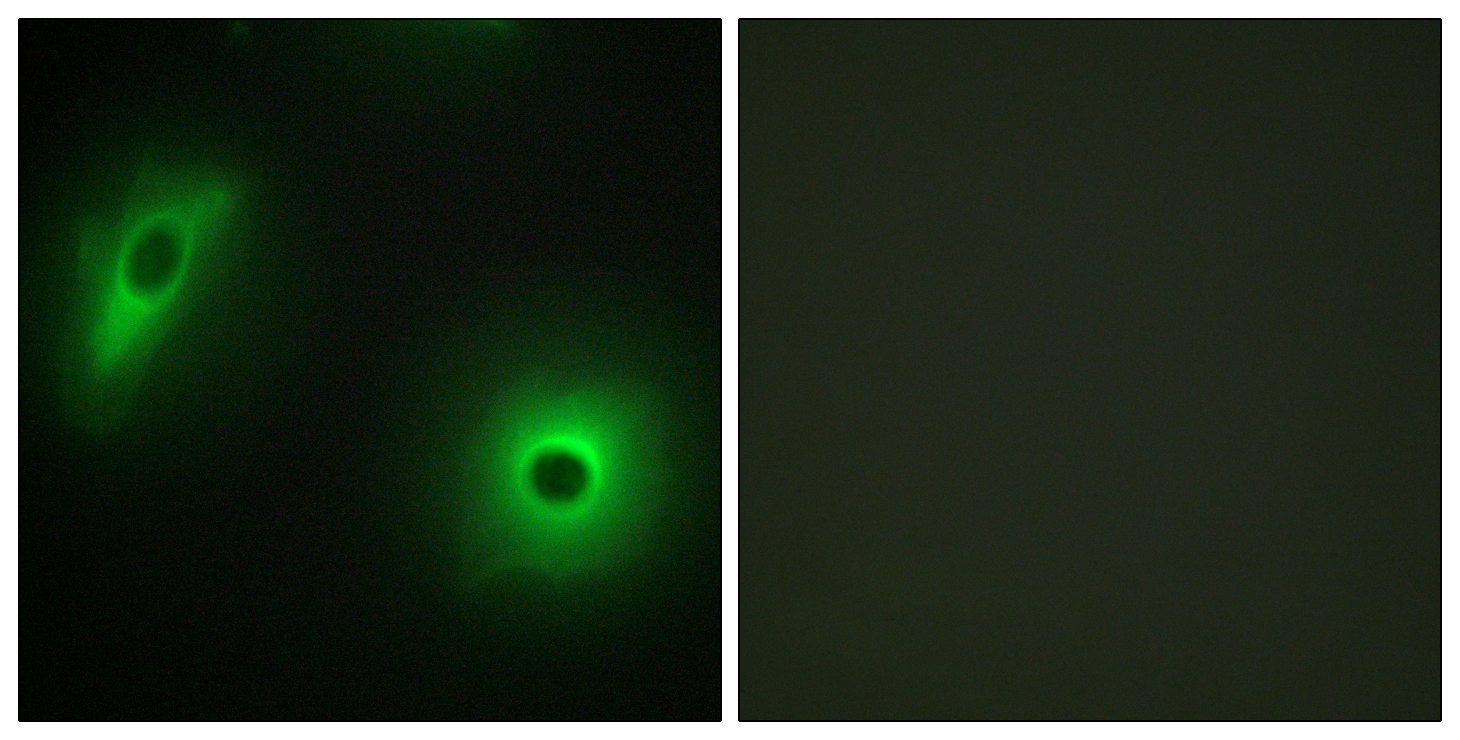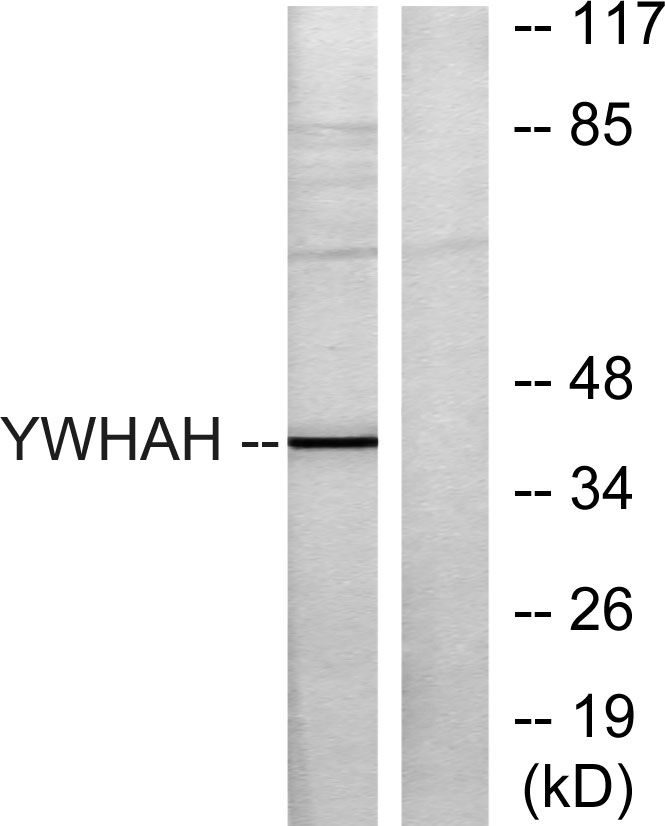14-3-3 η Polyclonal Antibody
- Catalog No.:YT0009
- Applications:WB;IHC;IF;ELISA
- Reactivity:Human;Mouse;Rat
- Target:
- 14-3-3 eta
- Fields:
- >>Cell cycle;>>Oocyte meiosis;>>PI3K-Akt signaling pathway;>>Hippo signaling pathway;>>Hepatitis C;>>Viral carcinogenesis
- Gene Name:
- YWHAH
- Protein Name:
- 14-3-3 protein eta
- Human Gene Id:
- 7533
- Human Swiss Prot No:
- Q04917
- Mouse Gene Id:
- 22629
- Mouse Swiss Prot No:
- P68510
- Rat Gene Id:
- 25576
- Rat Swiss Prot No:
- P68511
- Immunogen:
- The antiserum was produced against synthesized peptide derived from human 14-3-3 eta. AA range:51-100
- Specificity:
- 14-3-3 η Polyclonal Antibody detects endogenous levels of 14-3-3 η protein.
- Formulation:
- Liquid in PBS containing 50% glycerol, 0.5% BSA and 0.02% sodium azide.
- Source:
- Polyclonal, Rabbit,IgG
- Dilution:
- WB 1:500 - 1:2000. IHC 1:100 - 1:300. IF 1:200 - 1:1000. ELISA: 1:5000. Not yet tested in other applications.
- Purification:
- The antibody was affinity-purified from rabbit antiserum by affinity-chromatography using epitope-specific immunogen.
- Concentration:
- 1 mg/ml
- Storage Stability:
- -15°C to -25°C/1 year(Do not lower than -25°C)
- Other Name:
- YWHAH;YWHA1;14-3-3 protein eta;Protein AS1
- Observed Band(KD):
- 42kD
- Background:
- This gene product belongs to the 14-3-3 family of proteins which mediate signal transduction by binding to phosphoserine-containing proteins. This highly conserved protein family is found in both plants and mammals, and this protein is 99% identical to the mouse, rat and bovine orthologs. This gene contains a 7 bp repeat sequence in its 5' UTR, and changes in the number of this repeat have been associated with early-onset schizophrenia and psychotic bipolar disorder. [provided by RefSeq, Jun 2009],
- Function:
- function:Adapter protein implicated in the regulation of a large spectrum of both general and specialized signaling pathway. Binds to a large number of partners, usually by recognition of a phosphoserine or phosphothreonine motif. Binding generally results in the modulation of the activity of the binding partner.,similarity:Belongs to the 14-3-3 family.,subunit:Homodimer (By similarity). Interacts with many nuclear hormone receptors and cofactors including AR, ESR1, ESR2, MC2R, NR3C1, NRIP1, PPARBP and THRA. Interacts with ABL1 (phosphorylated form); the interaction retains it in the cytoplasm. Interacts with RGNEF and PCTK1 (By similarity). Weakly interacts with CDKN1B.,tissue specificity:Expressed mainly in the brain and present in other tissues albeit at lower levels.,
- Subcellular Location:
- cytoplasm,mitochondrion,cytosol,plasma membrane,intercalated disc,cytoplasmic vesicle membrane,extracellular exosome,
- Expression:
- Expressed mainly in the brain and present in other tissues albeit at lower levels.
- June 19-2018
- WESTERN IMMUNOBLOTTING PROTOCOL
- June 19-2018
- IMMUNOHISTOCHEMISTRY-PARAFFIN PROTOCOL
- June 19-2018
- IMMUNOFLUORESCENCE PROTOCOL
- September 08-2020
- FLOW-CYTOMEYRT-PROTOCOL
- May 20-2022
- Cell-Based ELISA│解您多样本WB检测之困扰
- July 13-2018
- CELL-BASED-ELISA-PROTOCOL-FOR-ACETYL-PROTEIN
- July 13-2018
- CELL-BASED-ELISA-PROTOCOL-FOR-PHOSPHO-PROTEIN
- July 13-2018
- Antibody-FAQs
- Products Images

- Immunofluorescence analysis of HeLa cells, using 14-3-3 eta Antibody. The picture on the right is blocked with the synthesized peptide.

- Western blot analysis of lysates from Jurkat cells, using 14-3-3 eta Antibody. The lane on the right is blocked with the synthesized peptide.



